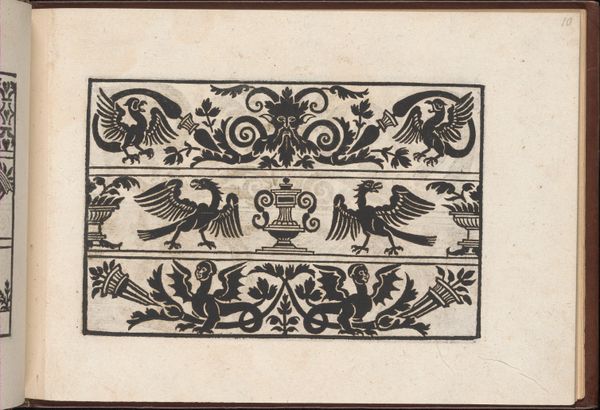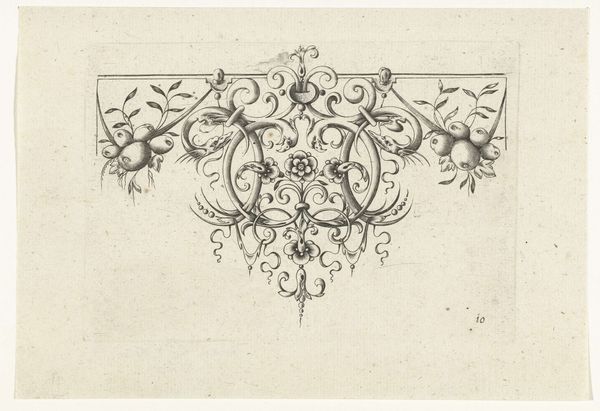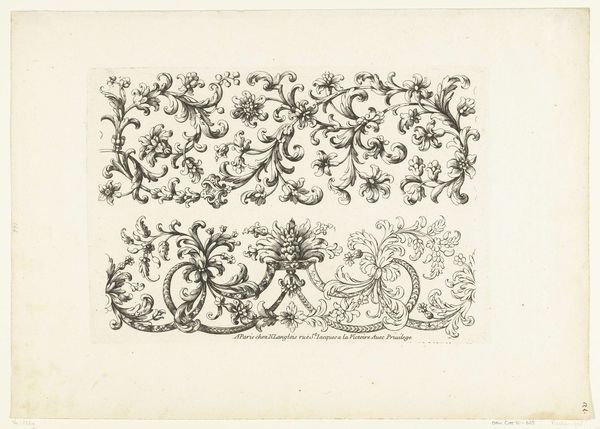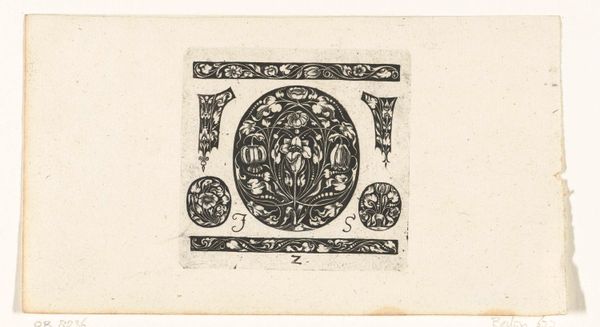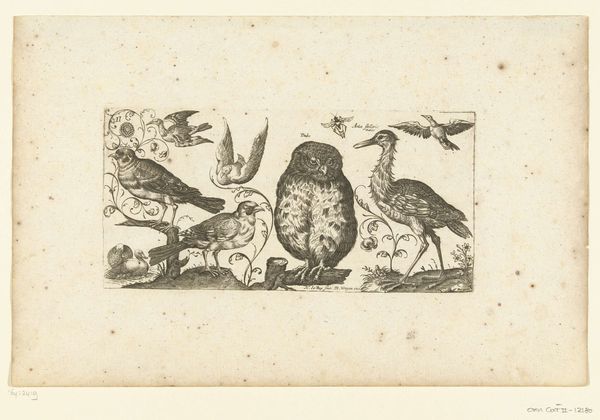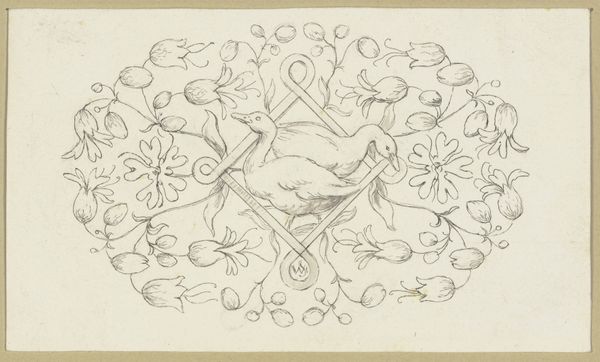
drawing, ornament, ink, engraving
#
drawing
#
ornament
#
baroque
#
pen drawing
#
figuration
#
ink
#
line
#
engraving
Dimensions: height 66 mm, width 109 mm
Copyright: Rijks Museum: Open Domain
Curator: At first glance, I’m struck by the precision of this pen and ink drawing. The artist, H. Picart, created this ornate piece around 1618. The title, "Randornament met wapentrofee," translates to “Border Ornament with Weapons Trophy." It certainly delivers on that description, wouldn't you agree? Editor: It’s interesting, isn't it? The level of detail achieved with ink is astounding, almost unsettling in its meticulousness. There’s a sense of controlled exuberance. What exactly would you say this depicts symbolically? Curator: It’s very much within the Baroque style—an embrace of complexity, where the pen lines weave into something of visual theatre. We have the "wapentrofee"—weaponry and heraldic shield emblems implying power and authority at the very centre, flanked by these somewhat surreal winged creatures with humanoid features emerging from them, symbols in and of themselves no doubt related back their patron’s values... Editor: So, power and control visualized through mythology and literal instruments of dominion. Note too that Picart positions images of wildlife--crustaceans and fowl, even domestic birds--symmetrically balanced in relation to the central shield. It suggests dominion extends over the natural world, too, no? Curator: Precisely. Baroque art was frequently commissioned to underscore these types of claims. This piece, especially being rendered with such exacting details in engraving style evokes strength through line. The line creates a sense of grandeur as well… Editor: Grandiose perhaps is a better descriptor, almost as a conscious spectacle that legitimizes through abundance. Look at the way Picart uses line for hatching, which renders dimensionality. I find it visually appealing yet I also consider this an aesthetic for domination expressed formally through design. It’s somewhat problematic as propaganda goes…. Curator: And of course, the piece likely served a decorative or propagandistic function in its original setting. Engravings, due to their reproducible nature, could be circulated to broader audiences, spreading whatever socio-political messages and tastes they advanced. Considering the work’s survival for hundreds of years, how should that factor into how we value the cultural memory, then? Editor: By continuing to discuss and critique its historical contexts while showing works such as these, we ensure these artifacts act as points for crucial civic awareness not simple aesthetic appreciation, especially since art and design possess their own kind power.
Comments
No comments
Be the first to comment and join the conversation on the ultimate creative platform.



